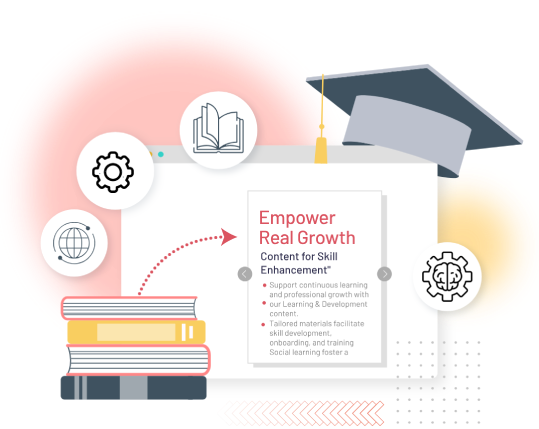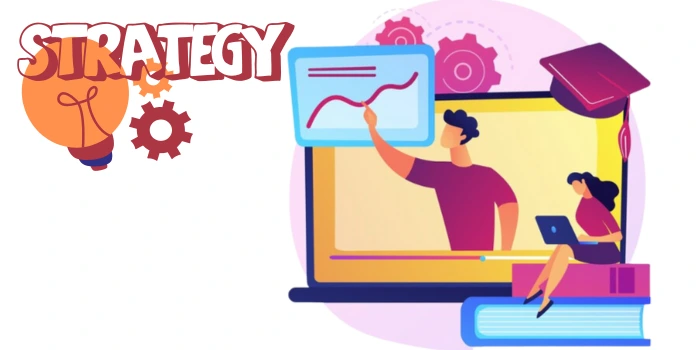

Imagine a classroom without walls, a university that fits in your pocket, or a mentor available 24/7 at your convenience. This is not some utopian dream—this is the reality we are building with eLearning content. In a world grappling with rapid technological shifts, economic upheavals, and a growing skills gap, the way we learn has to evolve. For businesses in the eLearning sector, this transformation is both an opportunity and a responsibility.
India, with its vast youth population, diverse learning needs, and rapid digital adoption, sits at the epicenter of this global shift. But to truly harness this potential, leaders in the eLearning space must embrace innovation, invest in personalization, and rethink education as a dynamic, lifelong journey.

The story of education is as old as civilization itself. From the oral traditions of ancient India to the Gurukuls, education has evolved over time. The mass education systems of the industrial era reflect this evolution. Despite the changes, the core purpose has remained the same: to prepare individuals for the challenges of their time.
But today’s challenges are different. The shelf life of skills is shrinking, traditional classrooms are unable to keep up, and learners demand flexibility and relevance. eLearning content has emerged not just as an alternative but as the cornerstone of education’s future.
Consider this: during the pandemic, global education systems didn’t just adapt to online learning—they leaned on it for survival. For Indian businesses in the eLearning industry, this represents a turning point. The world has witnessed what is possible. Now, the question is: how do we lead this change?
To understand why eLearning content is the future, we need to go deeper into its transformative power. Here are three reasons that stand out:

In a country like India, where geographical and economic disparities often limit educational opportunities, eLearning levels the playing field. High-quality content delivered through affordable smartphones and data plans is a game changer.
According to the World Economic Forum Report, India is the second-largest market for online education, trailing only the US. The education landscape is undergoing significant digital transformation, driven by progressive government initiatives like the National Education Policy (NEP) 2020 and a thriving ecosystem of over 5,000 EdTech start-ups spanning the entire learning lifecycle.
It’s not just about urban learners; it’s about reaching every corner of the country.
Gone are the days when learning ended with formal education. Today’s professionals are lifelong learners, constantly upskilling to stay relevant. Companies like Infosys and Tata Consultancy Services have already embedded robust eLearning platforms within their organizations, ensuring their workforce is future-ready.
Unlike traditional classrooms, eLearning thrives on customization. AI-powered platforms can adapt to a learner’s pace, preferences, and proficiency. Today a student in Rajasthan can learn coding basics in Hindi while another in Mumbai dives into advanced Python tutorials—all from the same platform.
The eLearning industry is no longer about selling courses; it’s about creating ecosystems. Here’s why this matters:
In a world of AI, automation, and digital transformation, 85 million jobs could be displaced by 2025—but 97 million new roles will emerge. This isn’t just a statistic; it’s a call to action. Businesses that invest in eLearning content today will build the workforce of tomorrow.
Retaining talent is about more than perks and paychecks. It’s about purpose. Today’s workforce craves growth opportunities and meaningful contributions. Providing employees with engaging, gamified learning content shows you’re invested in their development, not just their output.
A recent Forbes study revealed that companies with highly engaged teams experience 21% greater profitability. Engaging eLearning content, such as role-specific skill modules and gamified assessments, ensures employees remain motivated and aligned with organizational goals.
|
Discover How LexiConn Created 70+ Mobile-First eLearning Modules |
Moreover, another Forbes report highlighted that 94% of employees say they would stay at a company longer if it invested in their learning and development. These numbers are proof that learning is the new currency of engagement.
India’s young, tech-savvy population makes it a fertile ground for innovation in eLearning. As domestic players expand their global footprint, Indian businesses have a unique opportunity to shape international education trends.
No transformation comes without challenges, and eLearning is no exception. But for visionary leaders, challenges are opportunities in disguise. Let’s explore three common hurdles:
Dry, one-size-fits-all content is the fastest way to lose an audience. Today’s learners, especially in digital environments, demand content that is interactive, personalized, and meaningful. The solution? Storytelling.
Storytelling humanizes the learning experience, making it more relatable and memorable. It connects learners to real-world scenarios, encourages emotional engagement, and enhances knowledge retention. Research shows that people are 22 times more likely to remember facts when they are embedded in a story rather than presented as plain data.
Incorporating case studies and real-world applications adds relevance, allowing learners to connect theories with practical outcomes. Moreover, immersive technologies like Augmented Reality (AR) and Virtual Reality (VR) are revolutionizing education.
With storytelling and emerging technologies, education becomes more dynamic, engaging, and effective—key elements for keeping today’s learners invested.
Education and training content can quickly become outdated, diminishing its relevance and value. The key to overcoming this challenge is agility. This refers to the ability to adapt content swiftly to align with emerging trends and innovations.
Modular Content offers a solution. Breaking down content into smaller, adaptable units allows for easy updates without overhauling the entire curriculum. In addition, platforms integrated with emerging tools like Artificial Intelligence (AI) play a vital role. AI can personalize learning pathways, suggest content updates based on industry trends, and automate content enhancements.
While urban India rapidly embraces eLearning, rural regions continue to face significant challenges, such as limited internet connectivity, lack of digital infrastructure, and lower access to devices. These disparities create a digital divide that prevents millions of learners from benefiting fully from digital education. Addressing this gap is crucial for equitable learning opportunities.
Connectivity and accessibility remain key barriers. According to a report only 24% of rural households in India have access to the internet. Moreover, limited access to devices like smartphones and laptops exacerbates the issue.
The solution lies in a multi-pronged approach:

eLearning businesses need more than high-quality content; they need visionary leadership to navigate a competitive and rapidly changing landscape. Strong leadership helps shape strategy, unlock opportunities, and deliver learning experiences that empower users. Here’s what it takes to lead effectively:
eLearning is about empowering learners to grow, connect, and engage meaningfully. Visionary leaders recognize that eLearning platforms can become learning ecosystems where individuals collaborate, share ideas, and contribute to collective growth.
Collaboration unlocks new opportunities and strengthens the value proposition of eLearning businesses. By partnering with key stakeholders like schools, universities, corporations, and government bodies, eLearning platforms can scale faster, reach underserved learners, and diversify their offerings.
Quality is the ultimate differentiator. With learners becoming more discerning, providing an exceptional experience is no longer optional—it’s a necessity. Leaders must invest in tools, content, and experiences that set their offerings apart.
Diversity and inclusion are no longer optional—they’re business imperatives. Inclusive learning platforms ensure that content resonates with a diverse audience by addressing factors like gender representation, language diversity, and cultural nuances. Inclusive content fosters trust and improves engagement, making learners feel seen and valued.

India’s eLearning story isn’t just about domestic success. It’s about global leadership. Here’s why India stands out:
Indian companies are already global leaders in IT services. The Indian IT industry continues to demonstrate remarkable growth, solidifying its position as a key driver of the country’s economy. According to the Ministry of Electronics and Information Technology, the sector contributed approximately 7% to India’s GDP in FY 2023-24. A recent Gartner report predicts that the Indian IT sector will reach $124.6 billion in 2024, reflecting an impressive 10.7% year-on-year growth.
Nasscom forecasts India’s broader tech industry, including hardware, to grow to $254 billion in FY24, representing a substantial increase of over $9 billion compared to the previous year. This continued upward trajectory highlights India’s role as a critical player in the global technology landscape and signals strong momentum for future growth.
Combining this technological expertise with the demand for affordable education creates a powerful export opportunity for Indian businesses.
India’s rich linguistic diversity, with 22 official languages and hundreds of regional dialects, gives our businesses a natural edge in localization. This deep understanding of adapting content for varied languages and cultures equips Indian companies to seamlessly cater to global audiences.
From tailoring digital solutions for regional markets to offering multilingual customer support, Indian businesses are well-positioned to address the unique needs of diverse international markets. This expertise will enable us to drive engagement, enhance user experience, and expand our global footprint effectively.
Initiatives like NEP 2020 and Skill India demonstrate the importance of digital education and lifelong learning, laying the groundwork for a more skilled and future-ready workforce. The National Education Policy (NEP) 2020 prioritizes technology integration in education, promoting digital classrooms, flexible learning pathways, and skill development to meet evolving industry demands.
Similarly, Skill India focuses on equipping individuals with job-relevant skills through digital platforms and vocational training.
These aren’t just policy frameworks; they act as catalysts that are accelerating the growth of eLearning and EdTech, encouraging innovation, and preparing India’s talent pool to thrive in a dynamic global economy.
At LexiConn, we specialize in creating impactful eLearning and training content that drives real-world results. From seamless LMS integration to AI-powered solutions, our content is tailored to align with your business goals, engage learners, and address industry-specific challenges.

We provide:
For businesses already in the eLearning space, the future is bright—but only if you act decisively. eLearning content isn’t just about knowledge; it’s about empowerment, engagement, and transformation. Take your business eLearning content to the next level with LexiConn. Contact us today and book a 30-minute discovery session.



I have read and accept the Privacy Policy
Read More